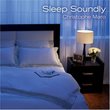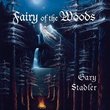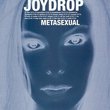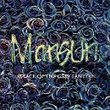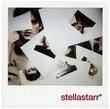| All Artists: Wendy Carlos Title: Beauty in the Beast Members Wishing: 6 Total Copies: 0 Label: East Side Digital Original Release Date: 1/1/1986 Re-Release Date: 11/4/2003 Album Type: Enhanced, Original recording reissued Genres: Dance & Electronic, Special Interest, New Age, Rock, Soundtracks, Classical Styles: Electronica, Experimental Music, Historical Periods, Modern, 20th, & 21st Century, Instruments, Electronic Number of Discs: 1 SwapaCD Credits: 1 UPCs: 021561815520, 084317900727, 2605000026579 |
Search - Wendy Carlos :: Beauty in the Beast
 | Wendy Carlos Beauty in the Beast Genres: Dance & Electronic, Special Interest, New Age, Rock, Soundtracks, Classical
From the roar of Tibetan horns and the clangor of metal percussion that opens Beauty in the Beast, Wendy Carlos in 1986 signaled a new direction for her music. Beauty in the Beast is Carlos's magnum opus, an album that sho... more » |
Larger Image |
CD DetailsSynopsis
Amazon.com From the roar of Tibetan horns and the clangor of metal percussion that opens Beauty in the Beast, Wendy Carlos in 1986 signaled a new direction for her music. Beauty in the Beast is Carlos's magnum opus, an album that should have established the synthesizer's role in the new global music landscape. More than that, it should have established Carlos as a composer and not just a Switched-on Bach jukebox. But not too many people were listening. Rereleased now after 14 years, Beauty in the Beast has lost none of its power. Carlos is both profound and poignant, dissonant and disarming on Beauty, as she fuses a global orchestra from her synthesizers. "Poem for Bali" is the centerpiece of the album, an episodic, 17-minute excursion as Carlos orchestrates the sounds and rhythms of a digital gamelan orchestra. In addition to replicating the metallophones, gongs, and flutes of the traditional gamelan, she creates her own hybrid sound designs, giving this work a surreal and sometimes harrowing tone, like a dream bent through funhouse mirrors. But then there are pieces such as "A Woman's Song," based on a Balkan melody. The title track merges nightmare landscapes and a crazed carnival calliope with a haunting theme that sounds like a lament for the end of the world. Beauty in the Beast is an essential recording of both modern composition and synthesis--Carlos should plug into this circuit again. --John Diliberto Similarly Requested CDs
|
CD ReviewsUn-well-tempered D Darkman | New York State | 03/09/2001 (5 out of 5 stars) "Since J.S.Bach pushed "well-tempered" music on us (and thus spurred the development of music that could flexibly shift from key to key) it's almost impossible for us to hear modern compositions that are not well-tempered. W. Carlos has done that here, giving us a hint of the sort of unusual tunings you might hear in non-western music. I must admit, it takes a bit of getting used to, and at first this album might sound strangely sour -- because we're so used to hearing well-tempered music, which is actually just slightly "off" from the natural tuning. After a while, non-tempered music seems comfortable. However, Carlos composes music in the different tunings that shifts and adjusts its keys as modern western music does -- thus producing terrible clashes with the un-tempered scales. Traditional non-tempered music just doesn't shift keys this widely, for that very reason. So, it's a great experiment, but there are moments that aren't true to the intrinsic nature of non-tempered music. FYI here's a quick lesson on tempered music: To move a note up an octave, double the frequency of the sound. To move a note up a fifth, multiply the frequency of the sound by 1.5 (one and a half.) Now, if you move up 12 fifths -- which should be equal to 7 octaves -- the math doesn't work out! You don't end up on quite the same note since (2)**7 = 128 but (1.5)**12 = 129.7!!! A sequence of fifths ends up a tiny, tiny bit sharp compared to a sequence of octaves, about 1% "off"!!! So, to make both these sequences jibe, one flattens the notes evenly such that fifths are just a hair flat. The result doesn't sound as natural, but it makes every scale "well-tempered". There are actually many, many different cultures that have developed non-tempered music in many different ways, e.g. in arabic lands their scales and music can incorporate quarter-tones that are utterly missing from western music. I've heard synagogue chanting that used a different tuning. Some recordings of gregorian chants are sung with non-tempered tuning. So this explains how Carlos was playing around when she composed this album. It's somewhat flawed, because she roves from key to key in western style, and goes very far up and down the scale in a way that hilights the flaws of non-tempered music, but it's a marvelous experiment, and something everyone should hear and listen to... and understand!" The end of a long period of Tragic Unavailability D. W WISELY | Birmingham, AL USA | 01/03/2002 (5 out of 5 stars) "I have proudly owned a copy of the first release of this CD all these years. It is the best example I know of an utterly brilliant recording being tragically unavailable. As other reviewers note, the tuning does sound strange at first, but then one realizes how quickly one not only adjusts to it, but starts to hear it as natural and normal. Do yourself a favor and get this CD now. It is indispensable." The Most Beautiful Music in the World lodger | Seattle, WA United States | 09/02/2001 (5 out of 5 stars) "Nonstandard tunings, masterfully used. Gothic, "Bush of Ghosts" feeling. Great instrument modeling, not trying to sound just like acoustic instruments but using attributes of their spectra as part of instrument creation. Uh, it's real pretty. Spooky and balanced."
|

 Track Listings (8) - Disc #1
Track Listings (8) - Disc #1